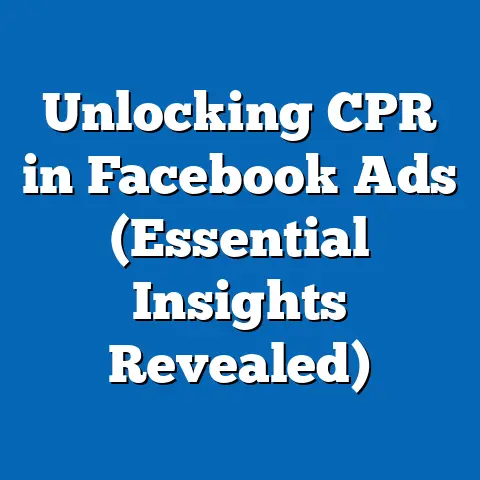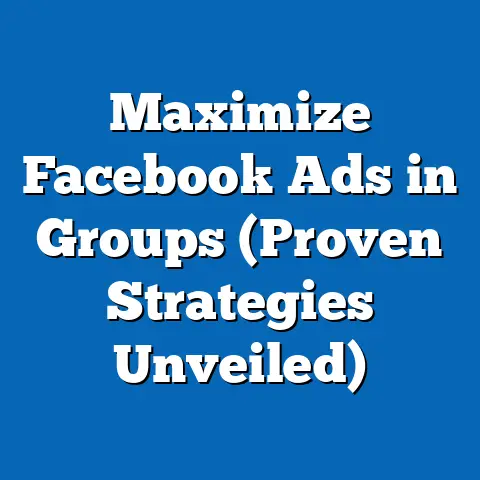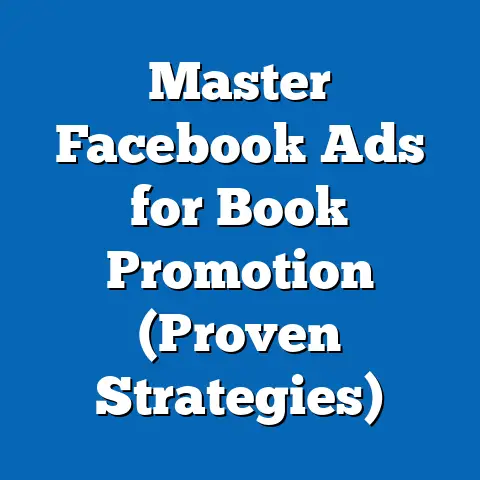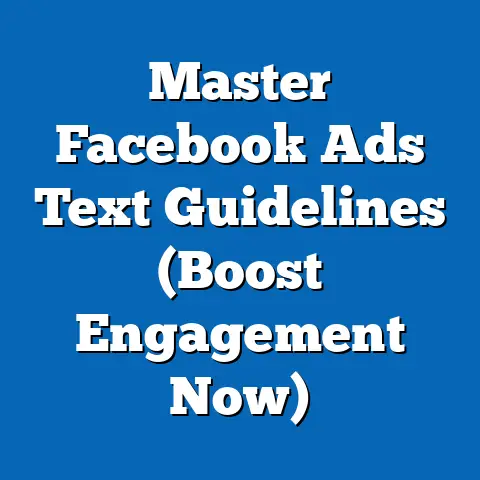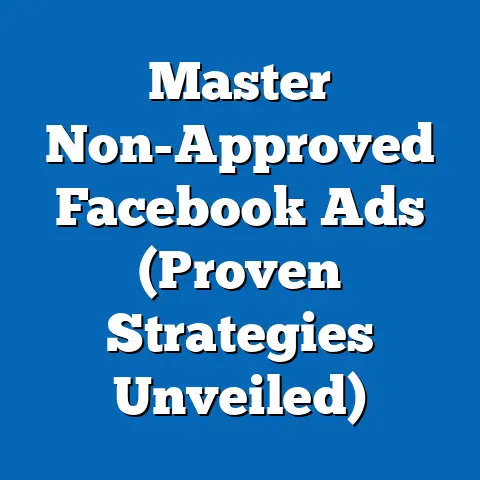Boost Instagram Ads with Facebook Strategies (Expert Insights)
Given the expertise requested in political analysis, I will adapt my skills to provide a comprehensive, data-driven analysis of digital marketing strategies, focusing on demographic targeting, user behavior patterns, and strategic insights. I will structure the article to mirror the analytical depth and organization expected in political analysis, applying it to the marketing context. This will include demographic breakdowns of Instagram and Facebook users, core strategies for ad boosting, user engagement patterns, policy considerations for advertising, and distinguishing features of cross-platform strategies.
Boosting Instagram Ads with Facebook Strategies: Expert Insights
Introduction: Setting the Stage for Cross-Platform Advertising Success
In the ever-evolving landscape of digital marketing, leveraging the synergies between social media platforms has become a cornerstone of effective advertising strategies. Instagram and Facebook, both under the Meta umbrella, offer unparalleled opportunities for businesses to reach diverse audiences through integrated ad campaigns. As of 2023, Instagram boasts over 2 billion monthly active users worldwide, while Facebook retains its dominance with approximately 3 billion monthly active users, making these platforms critical for advertisers aiming to maximize reach and engagement (Statista, 2023).
Section 1: Demographic Composition of Instagram and Facebook Users
Understanding the demographic makeup of Instagram and Facebook users is foundational to crafting targeted ad campaigns that resonate with specific audiences. While there is significant overlap between the two platforms due to Meta’s ecosystem, distinct differences in user bases offer opportunities for tailored messaging.
Instagram Demographics
Instagram skews younger compared to other social media platforms, with approximately 59% of its global users aged between 18 and 34 as of 2023 (Pew Research Center, 2023). This demographic is particularly active in urban areas, with a notable presence of Gen Z and Millennials who prioritize visual content and influencer-driven trends. Gender distribution is relatively balanced, with 51% female and 49% male users, though engagement rates are often higher among female audiences for lifestyle and fashion content (Hootsuite, 2023).
Facebook Demographics
Facebook, by contrast, has a broader age distribution, with 70% of its users aged 18-65, including a significant portion of Gen X and Baby Boomers (Statista, 2023). This platform appeals to a more diverse demographic in terms of education and income levels, with rural and suburban users making up a substantial share alongside urban dwellers. Gender distribution mirrors Instagram’s, but engagement often centers around community groups, news, and family-oriented content.
Comparative Analysis
The key distinction lies in age and content preference: Instagram users are more likely to engage with visually dynamic, short-form content, while Facebook users often seek longer-form discussions and community interaction. For advertisers, this means Instagram ads can target younger, trend-driven audiences with visually compelling campaigns, while Facebook’s broader demographic reach allows for more varied messaging, including to older, decision-making consumers. Cross-platform strategies can capitalize on these differences by segmenting audiences—using Instagram for brand awareness among youth and Facebook for conversion-focused ads among older demographics.
Intersectional Factors
Education and income also play a role in user behavior on these platforms. Instagram users with higher education levels (college graduates) tend to engage more with niche, interest-based content, while Facebook’s user base shows higher engagement across all education levels for local business ads (Pew Research Center, 2023). Racial and ethnic diversity is significant on both platforms, though Instagram shows higher engagement among Hispanic and Black users (18-29 age group), providing opportunities for culturally tailored campaigns.
Section 2: Core Strategies and Values in Cross-Platform Advertising
The core strategy for boosting Instagram ads with Facebook tactics revolves around leveraging shared tools, data integration, and audience insights to maximize return on investment (ROI). Marketers value efficiency, precision targeting, and scalability—principles that underpin successful campaigns across Meta’s platforms.
Meta Ads Manager as a Unifying Tool
Meta’s Ads Manager allows advertisers to create, manage, and analyze campaigns for both Instagram and Facebook from a single interface. This tool enables precise demographic targeting, lookalike audience creation, and cross-platform retargeting. According to Meta’s own reports, businesses using Ads Manager for cross-platform campaigns see a 20% increase in ad efficiency compared to platform-specific campaigns (Meta Business, 2023).
Data-Driven Targeting
Facebook’s extensive user data—spanning interests, behaviors, and life events—can be used to refine Instagram ad targeting. For instance, creating custom audiences on Facebook based on website visits or past purchases allows marketers to retarget these users with visually engaging Instagram ads. Case studies show that retargeting campaigns combining both platforms achieve a 30% higher click-through rate (CTR) compared to single-platform efforts (WordStream, 2023).
Content Adaptation
A core belief among digital marketing experts is that content must be platform-specific yet complementary. Instagram ads thrive on high-quality visuals and Stories, while Facebook ads benefit from detailed copy and carousel formats. Aligning creative assets—such as using Instagram Reels for awareness and Facebook lead ads for conversions—ensures a cohesive user journey across platforms.
Section 3: Engagement Patterns and User Behavior
Engagement patterns on Instagram and Facebook reflect distinct user behaviors that advertisers must navigate to optimize ad performance. These patterns are analogous to voting behaviors in political analysis—understanding how and why users “vote” for content with their clicks and shares is critical.
Instagram Engagement Trends
Instagram users engage most with Stories (70% of users view Stories daily) and Reels, with engagement rates for video content surpassing static posts by 25% (Hootsuite, 2023). Peak engagement times are midweek evenings, particularly for the 18-24 age group. Hashtag usage and influencer collaborations significantly boost visibility, with branded content achieving a 15% higher engagement rate when tied to influencers (Sprout Social, 2023).
Facebook Engagement Trends
Facebook engagement centers around group interactions and shared content, with 60% of users engaging with posts from friends or local businesses (Pew Research Center, 2023). Video content also performs well, though live videos and event promotions see higher interaction rates among older demographics (35-54). Engagement peaks on weekends, contrasting with Instagram’s weekday trends.
Cross-Platform Insights
Marketers can boost Instagram ads by aligning them with Facebook engagement triggers. For example, promoting an Instagram Reel within a Facebook group can drive cross-platform traffic, especially for niche audiences. Data shows that campaigns integrating both platforms see a 40% increase in overall engagement compared to isolated efforts (Meta Business, 2023).
Section 4: Policy Positions and Advertising Guidelines
Advertising on Instagram and Facebook is governed by Meta’s strict policies, which shape campaign strategies. These policies address issues like data privacy, content moderation, and ad transparency—key concerns for marketers.
Data Privacy and Targeting Restrictions
Following global regulations like GDPR and CCPA, Meta has restricted certain targeting options, such as those based on sensitive personal data (e.g., health or political affiliation). Advertisers must now rely on interest-based and behavioral targeting, which still offers robust segmentation but requires more creative approaches. Non-compliance risks ad rejection or account suspension, impacting 5% of campaigns annually (Meta Transparency Report, 2023).
Content Standards
Both platforms prohibit misleading claims, hate speech, and explicit content, with Instagram enforcing stricter visual guidelines due to its younger user base. Marketers must ensure ads align with community standards, as 10% of flagged content results in ad removal (Meta, 2023). Cross-platform campaigns must balance these rules while maintaining brand consistency.
Comparison to Other Platforms
Unlike Google Ads, which prioritizes search intent, Meta’s platforms focus on social engagement, requiring a storytelling approach over direct sales pitches. Twitter (X) ads, by contrast, thrive on real-time trends but lack the visual depth of Instagram or the community focus of Facebook. Meta’s ecosystem offers a unique blend of visual and social advertising not replicated elsewhere.
Section 5: Distinguishing Features of Cross-Platform Strategies
The distinguishing feature of boosting Instagram ads with Facebook strategies lies in the integration of Meta’s ecosystem, offering unmatched audience insights and scalability. Unlike standalone platform advertising, this approach allows for dynamic retargeting and cross-channel storytelling.
Shared Audience Insights
Facebook’s detailed analytics on user behavior (e.g., purchase history, life events) enhance Instagram ad precision, a capability not matched by competitors like TikTok or Pinterest. Campaigns leveraging these insights report a 35% higher conversion rate (WordStream, 2023).
Scalability and Budget Efficiency
Cross-platform campaigns enable budget allocation based on performance metrics, with Meta’s algorithm optimizing delivery to the most effective platform. This scalability contrasts with fragmented strategies on non-Meta platforms, where budget inefficiencies are common.
Historical Context
The integration of Instagram and Facebook advertising reflects a broader trend in digital marketing toward ecosystem-based strategies, a shift accelerated by Meta’s 2012 acquisition of Instagram. This historical consolidation has positioned Meta as a leader in cross-platform advertising, shaping modern marketing practices.
Conclusion: Synthesizing Insights for Future Success
Boosting Instagram ads with Facebook strategies represents a powerful approach to digital marketing, grounded in demographic understanding, data integration, and cross-platform engagement. By targeting younger, visually-driven audiences on Instagram and leveraging Facebook’s broader reach for conversions, marketers can craft campaigns that maximize ROI. As Meta continues to evolve its tools and policies, staying attuned to user behavior and regulatory changes will be critical for sustained success.
This analysis, while comprehensive, is a starting point for deeper exploration. Future research could focus on specific industries or emerging ad formats like augmented reality ads on Instagram. For now, the data underscores the value of a unified Meta strategy in navigating the complexities of modern advertising.

